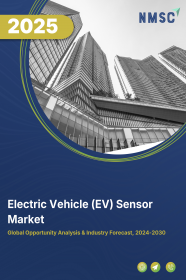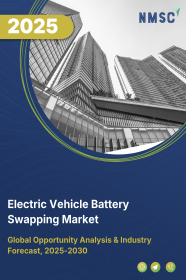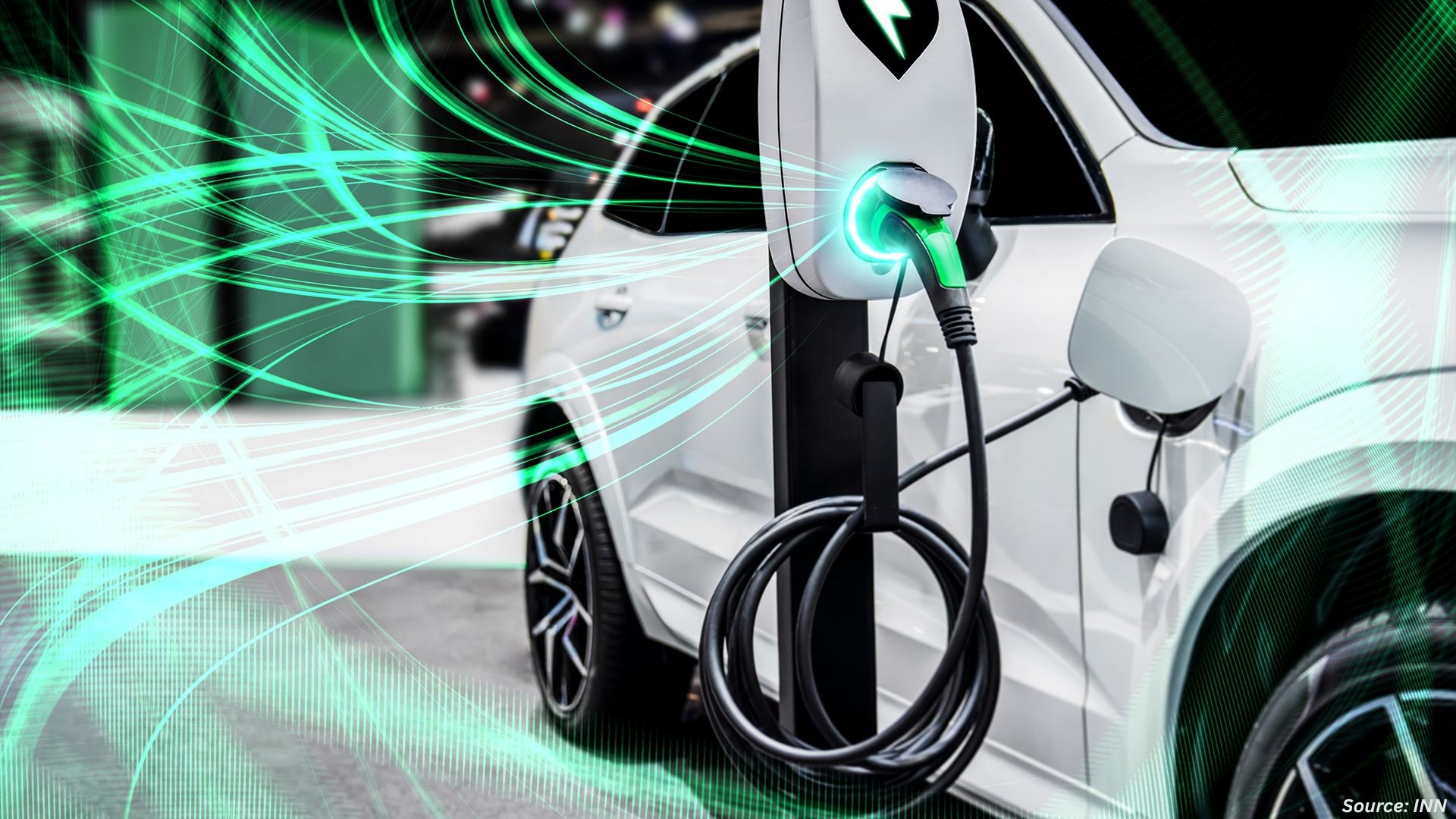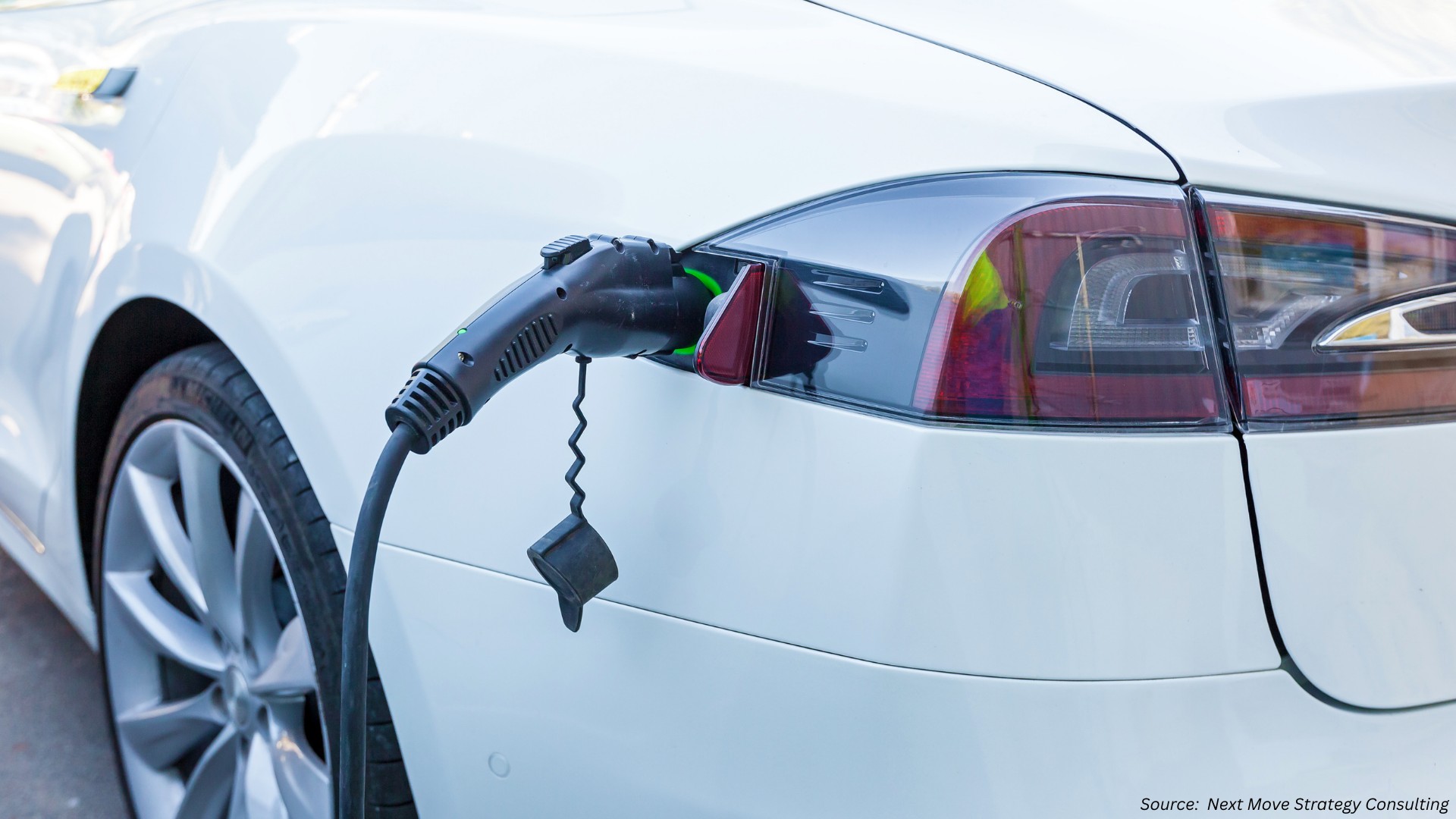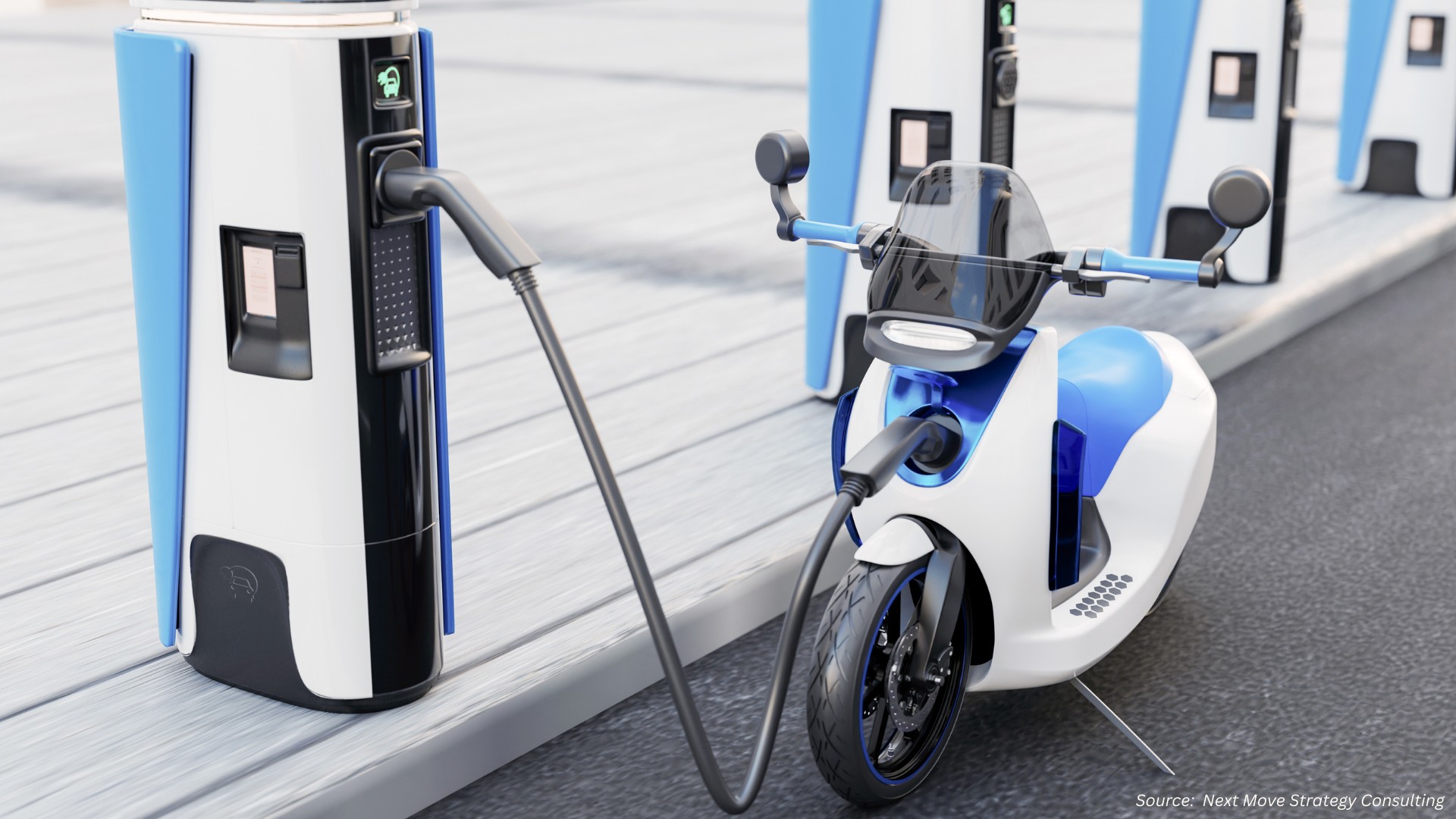
Electric Scooter and Motorcycle Market By Vehicle Type (E-Scooter/Moped, E-Motorcycle)By Technology (Plug-in, Battery)By Battery Type (Sealed Lead Acid, Lithium-ion, Nickel Metal Hydride, Sodium-Ion, Others), By Voltage Type (36V,48V,60V,Above 72V) By Range (Less Than 75 Miles, 75 Miles to 100 Miles, More Than 100 Miles)By Motor Type (Mid-Drive Motors, Hub Motors, Others), By Motor Power(Less Than 3kW, 3kW to 5kW, Others), Others – Global Opportunity Analysis and Industry Forecast, 2023–2030
Market Definition
The Electric Scooter and Motorcycle Market size was valued at USD 21.51 billion in 2022, and is predicted to reach USD 49.36 billion by 2030, with a CAGR of 14.2% from 2023 to 2030. The electric scooter and motorcycle market refers to the transportation industry segment, which includes the production, distribution, and consumption of battery-powered vehicles designed for personal mobility. Electric scooters and motorcycles offer environment-friendly alternatives to traditional internal combustion engine counterparts. These vehicles contribute to reducing emissions and urban congestion.
The electric scooter and motorcycle market intersects with the broader automotive and clean energy sectors, reflecting the growing demand for sustainable mobility solutions in the modern urban landscape. Electric scooters and motorcycles are utilized in urban community logistics, ride-sharing, tourism, and personal transportation.
Market Dynamics and Trends
The increasing demand for electric scooter and motorcycle is driven by several market dynamics and trends, which includes environmental concerns, urbanization and congestion, advancement in battery technology, cost efficiency, and others. For instance, in 2021, a study called “Fast Facts on Transportation Greenhouse Gas Emissions” was conducted by the United States Environmental Protection Agency. The study indicated that the transportation sectors with billions of motor vehicles worldwide contribute the largest to greenhouse gas emissions. However, as electric bikes run on energy from rechargeable batteries, they play a critical role in combating climate change by eliminating the creation of dangerous gases and reducing pollution of the atmosphere.
Additionally, as a greener and more effective substitute for conventional gasoline-powered cars, electric vehicles (EVs) have recently gained a lot of popularity. In their efforts to lower carbon emissions, governments worldwide are encouraging the use of electric vehicles by providing financial aid and subsidies to EV buyers and producers. For instance, in February 2023, the Indian Government announced a goal to electrify 30% of the nation's vehicle fleet by 2030. The government implemented several incentives and laws to assist the development of the EV sector.
However, the adoption of electric bikes and scooters is restrained by inadequate charging infrastructure. The lack of convenient charging stations made potential buyers hesitant to invest in these vehicles, especially those living in apartments or without private garages where charging could be more easily facilitated. Also, electric bikes and scooters often have a limited range per charge. Battery technology at the time was improving but faced challenges regarding energy density and charging times. Consumers were concerned about being stranded with a depleted battery, which restrains the market growth.
On the contrary, with the ongoing advancements in electric scooter technology, businesses are expected to witness improved performance and efficiency enhancements across various aspects. These improvements may encompass using lighter materials and more advanced aerodynamics to achieve higher speeds. Further progress also includes adding features such as automatic emergency braking, helping to stay in the lane, and smart connections using GPS navigation. These factors create ample growth opportunities for the electric scooter and motorcycle market in the coming years.
Market Segmentations and Scope of the Study
The electric scooter and motorcycle market is segmented on the basis of vehicle type, battery type, range, power, vehicle class, usage, voltage type, technology, and region. Based on vehicle type, the market is divided into e-scooter/moped and e-motorcycle. On the basis of battery type, the market is classified into sealed lead acid, lithium-ion, and others. Based on range, the market is categorized into less than 75 miles, 75 miles to 100 miles, and more than 100 miles. On the basis of power, the market is divided into less than 3kW, 3kW to 5kW, and more than 5kW. On the basis of vehicle class, the market is segmented into economy and luxury. On the basis of usage, the market is categorized into commercial and private. Based on voltage type, the market is classified into 36V, 48V, 60V, 72V, and 98V. Based on technology, the market is divided into plug-in and battery. The geographic breakdown and analysis of each of the aforementioned segments includes regions, such as North America, Europe, Asia-Pacific, and the Rest of the World (RoW).
Geographical Analysis
Asia-Pacific holds the dominant share of the electric scooter and motorcycle market, and is expected to continue its dominance during the forecast period. Several Asian governments have introduced incentives and subsidies to surge the adoption of electric vehicles, such as scooters and motorcycles. For instance, in December 2022, the Taiwanese Government declared plans to continue providing subsidies for electric scooters for four more years until 2026. From 2023 to 2026, the government also plans to invest USD 191.5 million for promoting three significant projects. These projects include increasing the number of electric vehicles charging stations, energy management systems, and electric vehicle supply chains. This move aligns with national policy, which aims to encourage the production and purchase of electric vehicles and replace outdated scooters with new electric ones.
Additionally, the presence of key market players such as Yamaha Motor Co., Yadea Group Holdings Ltd., and Revolt Motors plays a major role in the growth of the market in this region. For instance, in April 2023, Revolt Motors plans to manufacture e-motorcycles in India for international markets. With this step, Revolt is anticipated to become the first two-wheeler producer of its kind to provide an electric motorbike made in India for international markets. This move can potentially stimulate investments and technology transfers in the electric vehicle sector, ultimately accelerating the growth.
On the other hand, North America is expected to show a steady rise in the electric scooter and motorcycle market. The governments of various countries in this region, such as the U.S., Canada, and others, are spearheading initiatives to propel the growth of electric scooters and motorcycles across the region. For instance, in California, the Clean Vehicle Rebate Project (CVRP) provides incentives for acquiring or leasing qualified motor vehicles. Also, the California Air Resources Board (CARB) authorized or certified fuel cell electric vehicles (FCEVs), plug-in hybrid electric vehicles (PHEVs), and light-duty electric vehicles (EVs). Rebates for FCEVs can reach up to USD 2,500, while EVs qualify for rebates of USD 2,000. PHEVs are eligible for rebates of USD 1,000, and zero-emission motorbikes are entitled to a refund of USD 750.
Additionally, the British Columbian government offers a range of benefits to promote the growth of electric scooters and motorcycles. For instance, the Go Electric Specialty-Use Vehicle Incentive (SUVI) Program is available to anybody who resides in British Columbia, does business, or has an associate there. Electric motorcycles, low-speed, cargo e-bikes, medium- and heavy-duty, airport and port, and utility vehicles are among the vehicle types covered by this program. This provides financial incentives, reducing operating costs and promoting environmental sustainability. These factors are expected to boost the market growth in this region.
Competitive Landscape
The electric scooter and motorcycle market comprises various market players, such as Ola Electric Mobility Ltd. , S Motor Company, ther Energy Limited, Yadea Technology Group Co., Ltd., Honda Motor Co., Ltd. , AIMA Technology Group Co., Ltd., Husqvarna Mobility, Blacksmith Electric, AMO Mobility Solutions Pvt. Ltd, Jiangsu Xinri E-Vehicle Co.,Ltd, Energica Motor Company S.p.A., Essence Motorcycles, Huaihai Holding Group, TAIZHOU UGBEST EV CO., LTD., Jiangsu Lvneng Electrical Bicycle Technology Co., Ltd. and others. These market players are adopting various product launches as their key developmental strategies and increasing new units with sales across multiple regions to maintain their dominance in the electric scooter and motorcycle market.
For instance, in 2022, Energica unveiled 33 new sales locations in Europe, the Middle East, Africa, and Asia-Pacific along with 15 new locations in the U.S. These locations are expected to expand by the fall of 2023. The first shipment of Energica bikes was also available in Australia and Japan in the first quarter of 2023.
Also, in May 2021, Husqvarna promoted e-mobility and introduced solutions for motorcycles and scooters. With a line of zero-emission products, Husqvarna Motorcycles is moving ahead into the future and increasing its attractiveness to current riders and a completely new market. It introduced the Vektorr Concept e-scooter that can attain the top speed of 45 kilometers per hour and travel up to a range of 95 kilometers (kms).
Furthermore, it introduced the E-Pilen Concept e-motorcycle, which develops a power of 8 kilowatt (kW) and delivers a range of 100 kms.
Key Benefits
-
The electric scooter and motorcycle market report provides a quantitative analysis of the current market and estimations from 2023 to 2030. This analysis assists in identifying the prevailing market opportunities to capitalize on.
-
The study comprises an in-depth analysis of the electric scooter and motorcycle market trends, including the current and future trends for depicting the prevalent investment pockets in the market.
-
The information related to key drivers, restraints, and opportunities and their impact on the electric scooter and motorcycle market is provided in the report.
-
The competitive analysis of the market players along with their market share in the electric scooter and motorcycle market is provided in the report.
-
The SWOT analysis and Porter's Five Forces model are elaborated in the study.
-
The value chain analysis in the market study provides a clear picture of the stakeholders’ roles.
Key Market Segments
By Vehicle Type
-
E-Scooter/Moped
-
E-Motorcycle
By Technology
-
Plug-in
-
Battery
By Battery Type
-
Sealed Lead Acid
-
Lithium-ion
-
Nickel Metal Hydride
-
Sodium-Ion
-
Others
By Voltage Type
-
36V
-
48V
-
60V
-
Above 72V
By Range
-
Less Than 75 Miles
-
75 Miles to 100 Miles
-
More Than 100 Miles
By Motor Type
-
Mid-Drive Motors
-
Hub Motors
-
Others
By Motor Power
-
Less Than 3kW
-
3kW to 5kW
-
More Than 5kW
By Vehicle Class
-
Economy
-
Luxury
-
By Usage
-
Commercial
-
Private
By Region
-
North America
-
The U.S.
-
Canada
-
Mexico
-
-
Europe
-
The UK
-
Germany
-
France
-
Italy
-
Spain
-
Denmark
-
Netherlands
-
Finland
-
Sweden
-
Norway
-
Russia
-
Rest of Europe
-
-
Asia-Pacific
-
China
-
Japan
-
India
-
South Korea
-
Australia
-
Indonesia
-
Singapore
-
Taiwan
-
Thailand
-
Rest of Asia-Pacific
-
-
Rest of the World (RoW)
-
Latin America
-
Middle East
-
Africa
-
Key Players
-
Ola Electric Mobility Ltd.
-
TVS Motor Company
-
Ather Energy Limited
-
Yadea Technology Group Co., Ltd.
-
Honda Motor Co., Ltd.
-
AIMA Technology Group Co., Ltd.
-
Husqvarna Mobility
-
Blacksmith Electric
-
AMO Mobility Solutions Pvt. Ltd
-
Jiangsu Xinri E-Vehicle Co.,Ltd
-
Energica Motor Company S.p.A.
-
Essence Motorcycles
-
Huaihai Holding Group
-
TAIZHOU UGBEST EV CO., LTD.
-
Jiangsu Lvneng Electrical Bicycle Technology Co., Ltd.
REPORT SCOPE AND SEGMENTATION:
|
Parameters |
Details |
|
Market Size in 2022 |
USD 21.51 Billion |
|
Revenue Forecast in 2030 |
USD 49.36 Billion |
|
Revenue Growth Rate |
CAGR of 14.2% from 2023 to 2030 |
|
Analysis Period |
2022–2030 |
|
Base Year Considered |
2022 |
|
Forecast Period |
2023–2030 |
|
Market Size Estimation |
Billion (USD) |
|
Growth Factors |
Global environmental concerns and sustainability solutions Advancements in battery technology and cost-effectiveness
|
|
Countries Covered |
28 |
|
Companies Profiled |
15 |
|
Market Share |
Available for 10 companies |
|
Customization Scope |
Free customization (equivalent up to 80 working hours of analysts) after purchase. Addition or alteration to country, regional, and segment scope. |
|
Pricing and Purchase Options |
Avail customized purchase options to meet your exact research needs. |




















 Speak to Our Analyst
Speak to Our Analyst



